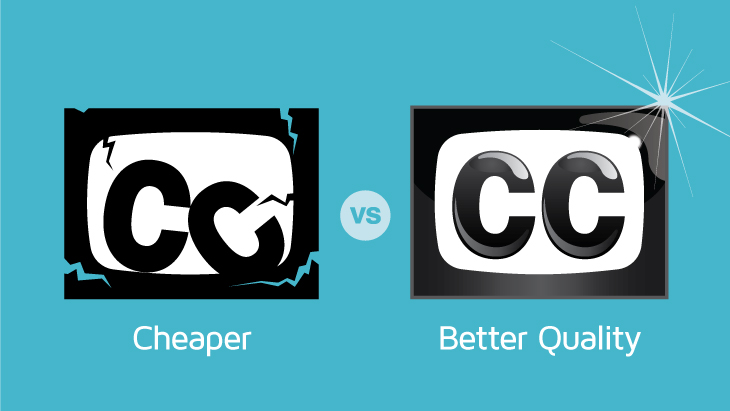Sometimes You Get Exactly What You Pay For, Volume I
The FCC averages around 500 closed captioning quality complaints per year.
Imagine the level of frustration felt by the hearing impaired person that actually takes the time to register a complaint.
When you consider that the majority of Americans can’t seem to find the time to vote, it becomes clear how significant this issue is. The fact that someone would take the time to complain to a government agency shows the level of angst they must be feeling.
Who causes the terrible closed captioning that not only loses conversational context but also disrupts the thread of dialogue?
Responsibility lies with the closed captioning company of course.
The National Center for Accessible Media (WGBH/NCAM) has reported that competition from captioning companies in the marketplace has forced prices down and quality had declined precipitously as a result.
They call these issues “pervasive.” Their report, in fact, said that the marketplace has not provided effective incentives for captioning companies to provide good quality closed captioning.
Captioning has become, in effect, not a service but a commodity.
In Europe it is customary to go for the middle bid on a service because savvy business owners know the lowest bid cuts quality.
In the United States, many companies view captioning as an afterthought. They see it as a government requirement they must fulfill before broadcasting their movie or TV show to the masses.
They look for vendors that substitute human quality controls with computer voice recognition. Alternatively, they choose the vendor that charges $1 per minute, only to be unhappy with the end result.
CaptionLabs had adopted the following quality metrics for accuracy in our closed captioning service:
– Captioned words must follow the order spoken.
– You must spell words properly, including homophones.
– Sentences must contain appropriate punctuation and capitalization to reflect the conversational flow.
– The proper tense must be used.
– You must represent accurate currency and numbers.
– No paraphrasing should be used.
– Captions should never cover other important information on the screen.
– Captions should indicate the speaker’s emotions and intonation (e.g. yelling, whispering, crying).
– You should include slang and utterances (“um”).
– Caption nonverbal sounds like music, gunfire, or audience applause so they appear and end in sync with the sound.
– For offline captioning, the audio should exactly sync with the caption.
Do you want the FCC to single you out as one of the 500 organizations with poorly captioned broadcasts every year? It could lead to regulatory scrutiny and penalties.
Requiring your captioning vendor to adopt these quality benchmarks will help you stay legal. It will also keep your customers—all of your customers—happy.
CaptionLabs doesn’t want to be the cheapest captioning company on the planet.
Providing accurate, appropriately synchronized captions, human quality controls, and terrific customer service is our mission.
The issue of media accessibility is too important to cut corners.
The deaf and hard of hearing deserve nothing less than our very best work every single day.

Jake Drown
Jake is our Vice President and oversees our day-to-day operations. Jake thrives on solving our customer’s problems - if you’re stuck at a roadblock, he’s the one you need to call. As a jack-of-all-trades, you never know what you will find Jake doing on the weekends! He and his family are seasoned travelers and can be found anywhere from a mountain top, a forest, a beach, or even a corn field!


